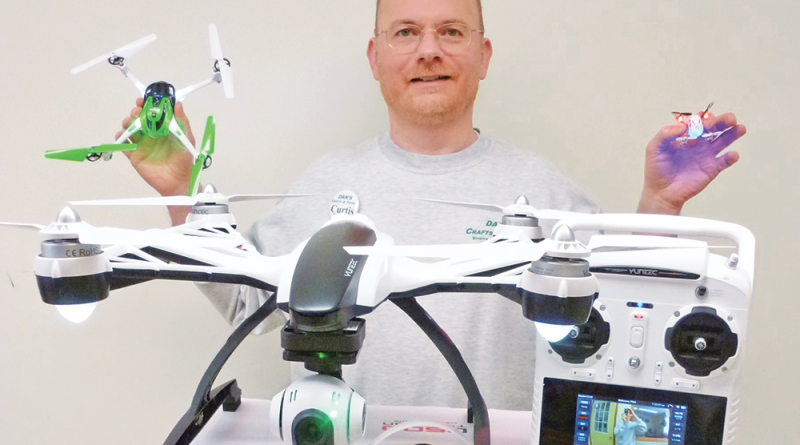Boomers’s New Trendy Toy: Drones
By Deborah Jeanne Sergeant
Commonly known as “drones,” unmanned aerial vehicles (UAVs) have become popular among baby boomers for both work and play. Now that they have the time to engage in more hobbies as retirees, those interested in radio-controlled aircraft can learn all about piloting a UAV. Though all ages enjoy UAVs, they offer 55-plus people some highly desirable benefits.
Curtis Donalies, president of Dan’s Crafts and Things in Rochester, said that many 55-plus people buy UAVs to look over their property, survey their deer hunting acres, and examine their home’s rain gutters, among their many practical uses.
“It takes time and energy to walk the acres,” Donalies said. “And for the rain gutters, now they don’t have to go up on a ladder.”
UAVs are becoming popular for business owners as well. Farmers, for example, use them for all sorts of reasons. Elson Shields,
Cornell University enteomologist who has flown drones since 1996, said UAVs can help farmers plan field drainage, monitor crops, identify plant stress, and time their harvest, as well as keep an eye on livestock, all without taking a step.
For beginners, Donalies recommends a small, light craft, which has spare parts available locally.
“It helps you develop the eye hand coordination for basic maneuvers,” he said.
For example, when you fly the craft back to where you’re standing, you must remember that the left and right movement of the controls refers the craft’s left and right, not yours.
Going small doesn’t mean you must select a featureless model.
“There are plenty of small UAVs that have the ability to have a camera onboard that you don’t have to register with the FAA to pilot,” he said.
UAVs lighter than 250 grams do not require registration. For those 250 grams and over, the registration is $5 for three years.
Newer, four-propeller helicopters are “easier to fly, but the prices are higher,” Donalies said.
He doesn’t see the technology as a barrier to anyone interested in flying.
“It doesn’t matter if you’re older, you can be on the cutting edge, especially if you are familiar with computers and smartphones.”
Read all instructions first and practice take-off and landing several times while in a wide open area. Don’t try any abrupt movements until you become accustomed to the controls. Turn the throttle down if you think you’ll crash because the craft will suffer less damage if the propellers aren’t turning upon impact with the ground.
Don’t fly a UAV near pets. Although UAVs look like toys, keep children away and never go near an operating UAV unless you are absolutely certain the propellers cannot engage, since their high speed can cause serious injuries.
Consider buying from an American source, since the instructions in an imported model may be difficult to understand or abrupt.
Where Can You Fly?
Most people flying UAVs are considered hobbyists. Recreational pilots don’t use their UAVs for hire or to benefit another person’s business for free. No one may fly a UAV in any restricted zone such as over the White House, above 400 feet and within three miles of airports.
If your UAV should damage someone else’s property, you are responsible for the expenses.
Additional local ordinances may apply. Check with your municipality.
To learn more about the changes in UAV laws, Elson Shields, Cornell University enteomologist who has piloted drones for a long time, advises pilots to join the Academy of Model Aeronautics (www.modelaircraft.org). The organization also offers reasonably priced liability and injury insurance as part of the membership.

